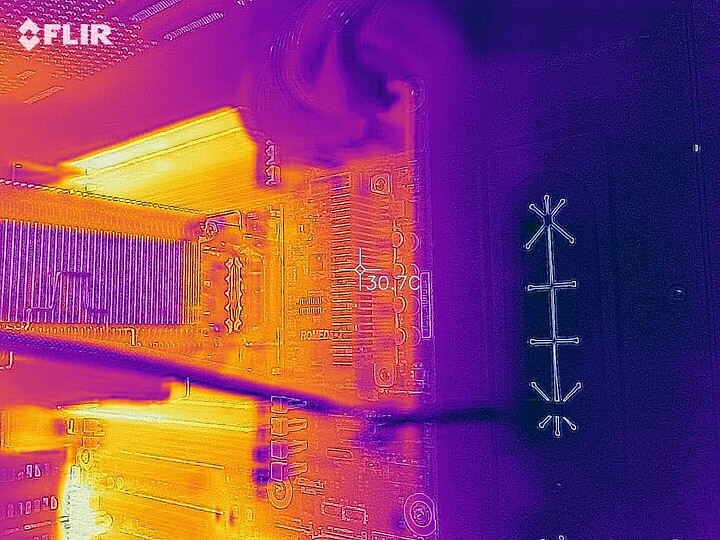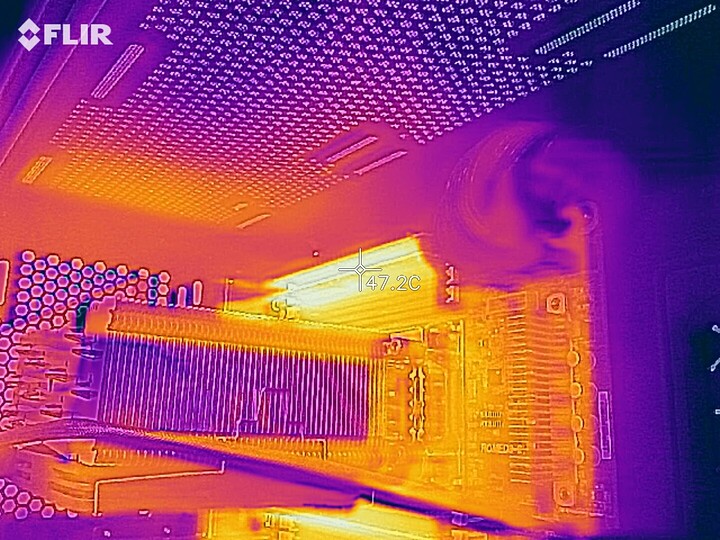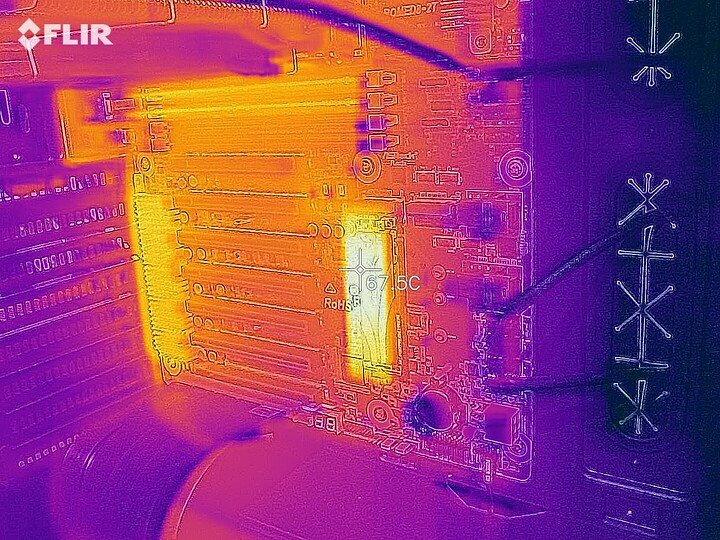So. Google led me to PassMark. They have a “burn-in test” to stress-test systems for stability. I ran it for CPU and RAM, and of course set everything to the maxxxxx. Here is where it stabilized :
Of note :
I think I’m right about the additional power planes acting as heatsinks. Notice that the circuit board’s temperature is always even. Also, it rises with load. All that copper is really spreading the heat. This is a very good thing : PCB’s are laminates, a hot point on a board can lead to delamination through uneven thermal expansion. Not likely to happen here.
The RAM shot up to 47 °C. The temperature gap between the sticks above and below the CPU heatsink has narrowed, however. It makes sense : the heatsink fins start above the upper edge of the DIMM’s and the case is vented at the top, so most of the heat coming off the CPU will miss them. 47 °C appears to be the temperature those sticks run at if you use them 100% with no airflow. It probably helps that those are dual-rank DIMM’s and therefore have more packages to spread the heat. At any rate, 47 °C for any silicon-based IC is perfectly acceptable.
The CPU heatsink finally got a tiny bit warm to the touch. The FLIR tells an interesting story : those heatpipes really work well, the temperature of the fins is the same as that of the base of the heatsink. The fin sides (which are closed) are significantly cooler.
I tried shooting the VRM from the edge to get a reading on the components under the heatsink but this isn’t reliable (I should have bought an even higher resolution bolometer, but those are way too expensive). What I can say is that at some point near the heatsink I saw 32 °C. It may have been the temperature of a VRM FET. The 1 / 1.5 °C difference with the heatsink is easily explained by the heatsink’s thermal resistance which is lower than I expected. The BCM reports a “board temperature” of 33 °C which may be measured near the VRM.
I tried the SSD stress-test and, unfortunately, it didn’t go well. The poor thing throttled almost immediately and got real warm
This puppy is really going need its heatsink, I’m afraid. It couldn’t go past 3.5 GB/s even though @wendell tested it at over twice that speed.


